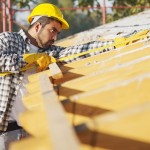Yes, it’s a big deal. The AER has even declared that even when a pipeline does not break during an incursion and collision that the incident must be reported. As much scrutiny as the oil and gas industry receives, you’d think that there would be less own-goaling and more proactive measures, but there’s a bunker mentality afoot that’s doing more harm than good. A wise man once advised that when they’re running you out of town, get out in front and make it look as if you’re leading the parade.
To be clear – there is never going to be a pipeline that doesn’t at leak at some point. The issue is getting out in front of it and using available technology and materials to make sure that it’s small and does the least possible damage. It’s not just a matter of the bottom line, it’s a matter of being a good corporate neighbor. It’s something that smaller energy sector companies can do to give them a competitive edge.
Do Better with Better
Every year there are developments in technology that can help to make pipelines safer, longer-lasting, with more carrying capacity, and more reliable. Not taking advantage of these advances, especially in the face of older or even obsolete gear is a chance nobody needs to take. Working with an experienced contractor is a good start, as is looking at their record. Projects need to be delivered on time and within budget, but in the contractor’s defence, the timeframe and budget need to have some basis in reality. Look for transparency when it comes to progress, and tools that allow you to monitor progress without camping on site. Upgrading might be a pain and an expensive one, but a major pipeline blowout or a repair issue requiring significant downtime can iceberg your operation for good.




